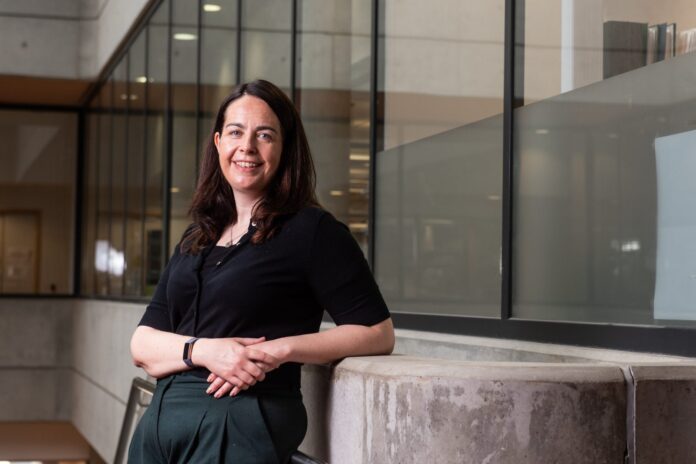One weekend in January 2020, immunologist Teresa Lambe received an email containing a DNA sequence.
Lambe, a vaccine researcher with the University of Oxford’s Jenner Institute, spent most of that weekend exchanging messages with colleagues as they designed what would become the genetic code for a vaccine against COVID-19.
Eventually, billions of doses of the vaccine were distributed worldwide, saving the lives of more than 6 million elderly and at-risk patients, according to global marketing analyses cited by the University of Oxford.
On Nov. 6, Lambe, co-designer of the Oxford-AstraZeneca COVID-19 vaccine, will deliver the next Maury Strauss Distinguished Public Lecture at the Fralin Biomedical Research Institute at VTC.
Her rapid response to COVID-19 was built on years of preparation. Before the pandemic, Lambe and her colleagues at Oxford’s Jenner Institute had been developing a flexible vaccine platform that could be adapted to new viral threats in record time. That work grew from lessons learned during previous global outbreaks.
Following the 2014 Ebola epidemic, the World Health Organization identified a list of pathogens at high risk of causing a future outbreak. International funders established programs to develop vaccines against these pathogens, and Jenner Institute scientists led development of ChAdOx1-based vaccines for Nipah virus and vaccines for MERS that produced an immune response in humans.
ChAdOx1 is a vaccine platform that uses a weakened version of a chimpanzee adenovirus to expose the body to genetic material from a target pathogen. Exposure to this material enables the body’s immune system to better recognize and respond to that pathogen.
Through years of development and testing, the Oxford team refined the ChAdOx1 platform so it could readily adapt to new diseases. By the time COVID-19 emerged into a global public health threat, the team had built ChAdOx1 into a reliable and flexible platform that could be tailored to SARS-CoV-2, the virus that causes COVID-19.
The vaccine was approved for human trials within months of its initial design. By late 2020, Lambe was overseeing the delivery of immune response data required for regulatory approval. On Dec. 30, 2020, the vaccine was approved for use in the United Kingdom. By the time the vaccine left production in 2023, it had been distributed in over 180 countries.
“Teresa Lambe’s work shows the importance of fundamental foundational biomedical research and how that science can strategically position us to be prepared to develop applications that save lives around the world,” said Michael Friedlander, executive director of the Fralin Biomedical Research Institute at VTC and Virginia Tech’s vice president for health sciences and technology. “Her journey offers a behind-the-scenes look at what it takes to build a vaccine under pressure — and how global teamwork makes that possible. It’s an important perspective for all of us as we think about life after COVID-19 and prepare for what’s next.”
Lambe has received many accolades for her work, including an honorary appointment as an officer of the Order of the British Empire for services to science and public health in the 2021 Queen’s Birthday Honors and a 2022 Irish Abroad Presidential Distinguished Service Award for science, technology, and innovation.
The free lecture is named for Maury Strauss, a longtime community benefactor and businessman whose support for biomedical research helped bring leading discussions of science and medicine to the greater Roanoke community.
The program begins with a 5 p.m. reception on Thursday, Nov. 6, followed by the lecture at 5:30 p.m. at the Fralin Biomedical Research Institute at 2 Riverside Circle in Roanoke. The lecture will also be livestreamed.
By Lena Ayuk


